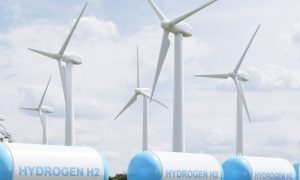India Moves Closer To Blending Green Hydrogen With Piped Natural Gas

A study by Engineers India Ltd. (EIL) found that blending 3-5% green hydrogen with piped natural gas is safe for existing infrastructure, advancing India’s clean energy goals. This move could reduce dependence on fossil fuel imports, enhance energy security, and cut costs. Pilot projects, like NTPC’s in Gujarat, are already testing higher hydrogen blends successfully.
A new study by Engineers India Ltd. (EIL) has found that up to 5 percent green hydrogen can be safely blended with piped natural gas. This discovery offers significant potential for reducing India’s fossil fuel dependency and advancing its green energy goals.
As India continues its green energy transition, the blending of green hydrogen with piped natural gas (PNG) could become a key component. Initial findings from a study led by Engineers India Ltd. (EIL) indicate that blending 3-5 percent green hydrogen with PNG can be achieved without compromising pipeline infrastructure, marking a significant step forward in India’s clean energy efforts.
EIL, in collaboration with IIT Kanpur, is conducting an extensive study to examine the impact of green hydrogen on the city gas distribution (CGD) network. According to a senior government official, the preliminary results have been submitted to the Ministry of Petroleum and Natural Gas (MoPNG), confirming that such a blend is feasible without adverse effects on the existing infrastructure.
This development is crucial for India, the world’s third-largest energy consumer, as it could help reduce dependence on fossil fuel imports. With India currently importing about half of its natural gas needs as liquefied natural gas (LNG), blending green hydrogen presents an opportunity to cut costs and bolster energy security. In FY24, India consumed 66.63 billion cubic metres (BCM) of natural gas, a rise from the 59.97 BCM in FY23 and 64.16 BCM in FY22.
Green hydrogen, produced through renewable energy and water electrolysis, stands in contrast to grey hydrogen, which is derived from methane and emits greenhouse gases. Green hydrogen is a versatile energy carrier, suitable for various applications, including transportation and renewable energy integration. However, its use is not without challenges, particularly concerning pipeline safety.
A 2013 study by the US Energy Department’s National Renewable Energy Laboratory (NREL) highlighted risks associated with hydrogen embrittlement—a phenomenon where hydrogen can weaken metal or polyethylene pipelines, increasing leakage risks, especially in high-pressure systems. The EIL study aims to assess these risks in India’s context.
Several public sector companies are already running pilot projects to test green hydrogen blending. NTPC, a state-run entity, launched a project at Kawas in Gujarat, blending 5 percent green hydrogen with PNG. By December 2023, the blend was increased to 8 percent, demonstrating the potential for scaling up.
Source Link : https://www.outlookbusiness.com/planet/sustainability/india-moves-closer-to-blending-green-hydrogen-with-piped-natural-gas

















